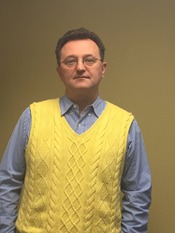Program Information
4D Radiobiology
E Fourkal1*, M Hossain2 , I Veltchev3 , C Ma4 , J Meyer5 , E Horwitz6 , A Nahum7 , (1) Fox Chase Cancer Center, Philadelphia, PA, (2) Fox Chase Cancer Center, Philadelphia, PA, (3) Fox Chase Cancer Center, Philadelphia, PA, (4) Fox Chase Cancer Center, Philadelphia, PA, (5) Fox Chase Cancer Center, Philadelphia, PA, (6) Fox Chase Cancer Center, Philadelphia, PA, (7) Clatterbridge Centre for Oncology, Bebington,
Presentations
SU-E-T-385 Sunday 3:00PM - 6:00PM Room: Exhibit HallPurpose:
The linear-quadratic model is the most prevalent model for planning dose fractionation in radiation therapy in the low dose per fraction regimens. However for high-dose fractions, used in SRS/SBRT/HDR treatments the LQ model does not yield accurate predictions, due to neglecting the reduction in the number of sublethal lesions as a result of their conversion to lethal lesions with subsequent irradiation. Proper accounting for this reduction in the number of sublethally damaged lesions leads to the dependence of the survival fraction on the temporal structure of the dose. The main objective of this work is to show that the functional dependence of the dose rate on time in each voxel is an important additional factor that can significantly influence the TCP.
Methods:
Two SBRT lung plans have been used to calculate the TCPs for the same patient. One plan is a 3D conformal plan and the other is an IMRT plan. Both plans are normalized so that 99.5% of PTV volume receives the same prescription dose of 50 Gy in 5 fractions. The dose rate in each individual voxel is calculated as a function of treatment time and subsequently used in the calculation of TCP.
Results:
The calculated TCPs show that shorter delivery times lead to greater TCP, despite all delivery times being short compared to the repair half-time for sublethal lesions. Furthermore, calculated TCP(IMRT) =0.308 for the IMRT plan is smaller than TCP(3D) =0.425 for 3D conformal, even though it shows greater tumor hot spots and equal PTV coverage. The calculated TCPs are considerably lower compared to those based on the LQ model for which TCP=1 for both plans
Conclusion:
The functional dependence of the voxel-by-voxel dose rate on time may be an important factor in predicting the treatment outcome and cannot be neglected in radiobiological modeling.
Contact Email:


